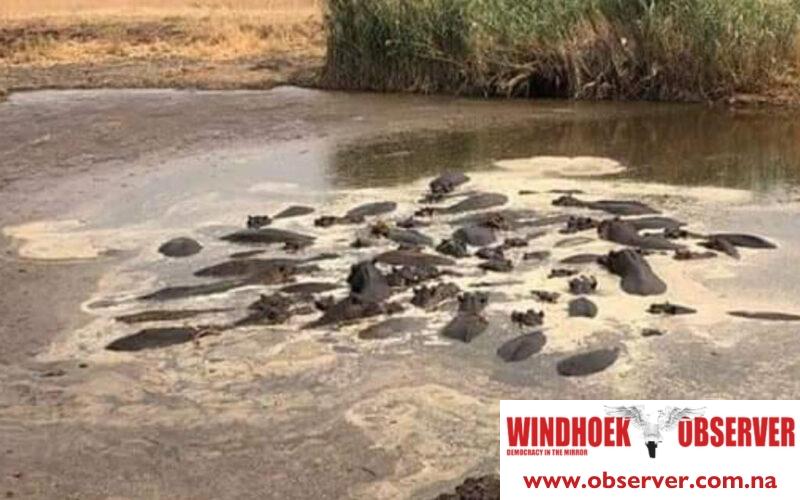The Niël Terblanché
The Ministry of Environment, Forestry, and Tourism has successfully intervened to rescue a group of hippos stranded on dry land in the Salambala Conservancy in the Zambezi region.
The severe drought caused a significant decrease in water levels in the floodplains of the major rivers that flow through the region, leaving the pond where the hippos had been making their last stand for months reduced to mud that did not protect them from the sun.
Romeo Muyunda, the ministry’s spokesperson, said on Wednesday that by May 2024, the situation had become critical, prompting immediate action from officials.
“The ministry procured a high-capacity water pump and a generator at a cost of N$66 531, and installed this equipment in June 2024,” Muyunda said.
He added that the pump, capable of delivering 18 000 litres of water per hour, has successfully raised the water levels in the pond, offering the stranded hippos much-needed relief.
Muyunda said a solar-powered system complemented the capabilities of the pumps and generators to ensure continuous water pumping during daylight hours.
“This urgent intervention was critical for the survival of the hippos and also for other wildlife and livestock in the region that depend on this water source,” he said.
This is not the first time the Ministry has stepped in to save hippos in distress.
In 2019, a similar situation occurred in the Zambezi region, where the ministry, in collaboration with Botswana’s wildlife authorities, installed boreholes and pump systems to provide water to over 200 hippos trapped in drying floodplains along the Linyanti and Chobe rivers.
At the time, these efforts included sinking additional boreholes and supplying fuel and generators to ensure continuous water flow, which successfully kept the animals alive until the next rainy season.
These proactive measures demonstrate Namibia’s commitment to wildlife conservation, particularly in times of environmental crisis.
Muyunda said that the ongoing efforts in the Salambala Conservancy and previous successful interventions are a demonstration of the Ministry’s dedication to addressing conservation challenges and ensuring the survival of Namibia’s wildlife under increasingly difficult conditions.
“The situation in the Salambala Conservancy will be closely monitored to take further action if necessary, ensuring that both hippos and other wildlife species in the region are protected until the rains return,” he said.
He said that the intervention placed renewed focus on the importance of dedicated conservation efforts and the need for continuous collaboration between government agencies and local communities to safeguard Namibia’s rich biodiversity.




